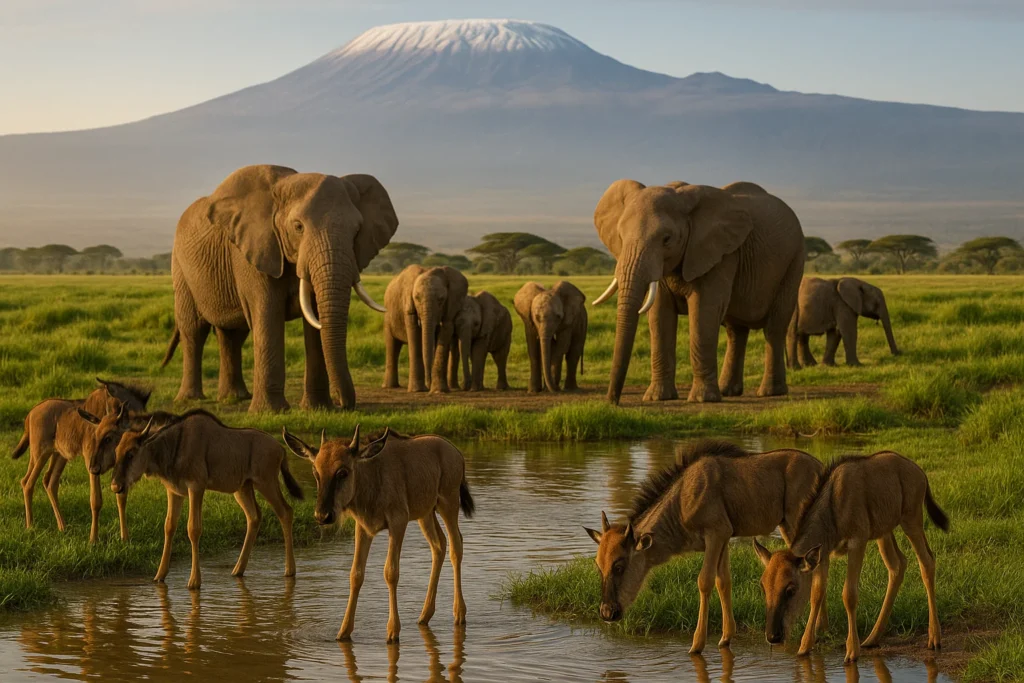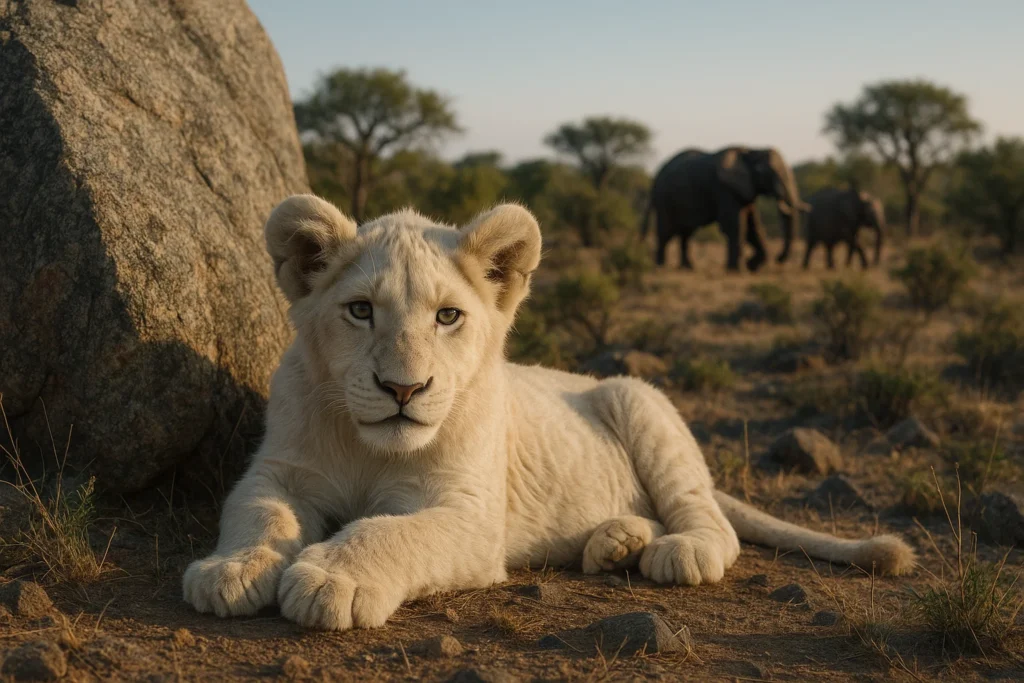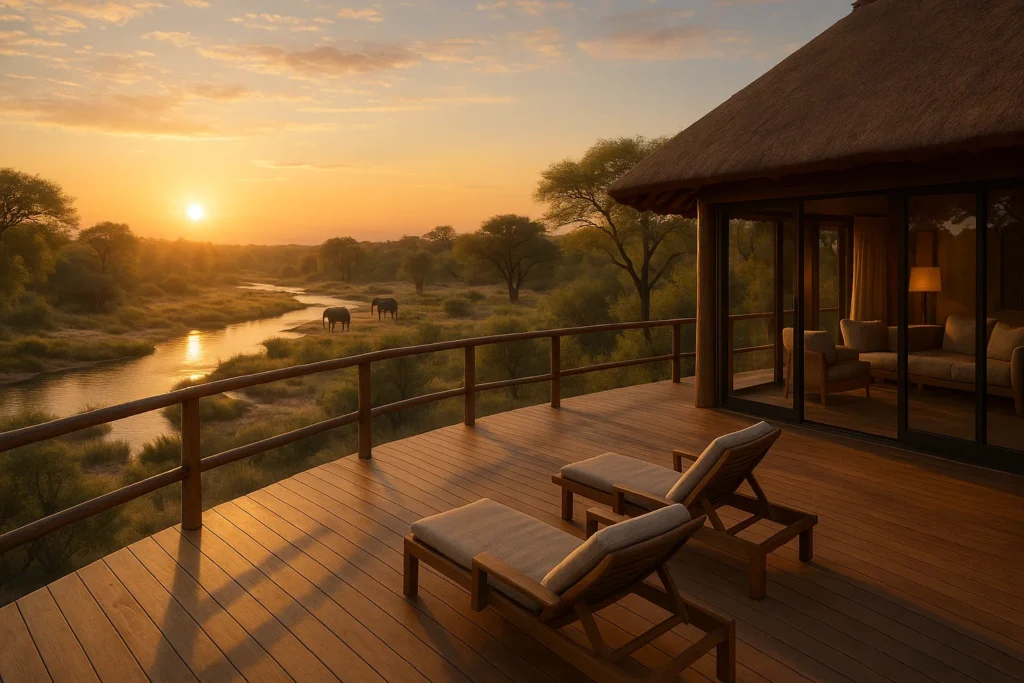Amboseli National Park is a stunning year-round safari destination in southern Kenya, framed by the iconic Mount Kilimanjaro. However, to tailor your experience—whether you’re chasing wildlife encounters, dramatic landscapes, or budget-friendly options—timing is everything. Let’s break it down by season.
1. Dry Season (June to October)
Why it’s the best overall time:
- Exceptional wildlife visibility: Sparse vegetation and shrinking water sources concentrate animals, especially elephants, around swamps and waterholes, making sightings more reliable.
- Game drives made easy: Dry tracks improve accessibility throughout the park.
- Better temperatures: Early mornings and evenings offer a comfortable climate.
- Clear Kilimanjaro vistas: Especially in August to October, the mountain is often free of cloud cover, offering that classic postcard shot.
What to expect:
- Dry, dusty landscapes—dramatic but less lush.
- Peak season crowds and higher costs—especially from July to October.
Ideal for: First-time safari-goers, wineries looking for iconic photos, families, and those prioritizing wildlife visibility and comfort.
2. Green (Wet) Season: November to Early March
Main benefits:
- Vibrant landscapes: Following rains, Amboseli turns lush and scenic—ideal for photographers.
- Baby animal boom: February and March bring calving season, with adorable elephant calves, wildebeest foals, and predators on the hunt.
- Birdwatching paradise: Migratory birds populate the wetlands, making this season a draw for birding enthusiasts.
- Lower crowds and rates: Shoulder season benefits like fewer tourists and better pricing apply.
Considerations:
- Occasional showers and denser vegetation may make wildlife spotting more challenging.
- Roads can become muddy and less accessible, particularly late March through May.
Ideal for: Photographers, birdwatchers, families on a budget, repeat safari travelers, and nature-lovers looking for a tranquil yet vibrant time.
3. Long Rains (Avoid if possible): April and May
Why it’s not ideal:
- Heavy rains and flooding: Roads may become impassable and wildlife disperses into the broader landscape.
- **Overcast skies disrupt photography and visibility.
- Low tourism: While roads and wildlife spotting suffer, this can be a tranquil period for those seeking solitude.
Ideal for: Travelers seeking peace and lodging discounts, especially if staying in luxury camps with fly-in access.
4. Month-by-Month Snapshot
| Months | Conditions & Highlights |
|---|---|
| Jan–Feb | Post-short rains, green season—great for birding, calving, and photography. |
| Mar | Transition into long rains; early month still okay, but wetter later. |
| Apr–May | Peak rains—lush landscape, fewer crowds, but challenging logistics. |
| Jun–Oct | Dry season—best overall for wildlife, clear skies, but busy and costly. |
| Nov–Dec | Short rains—green backdrop and birdlife; fewer crowds, some showers possible. |
5. Crowd Levels & Prices
- High season: July to October offers prime viewing but comes with higher costs and busy lodges.
- Shoulder season: January–March and November deliver decent weather with better availability and prices.
- Low season: April–May sees the fewest visitors and the best deals, but travel logistics may suffer.
Final Takeaway
- Prioritize wildlife visibility and comfort? Go between June and October.
- Chasing lush scenery, birdlife, and baby animals? Choose January through March.
- Looking for serene travel with savings? April–May could be worth it—if you’re prepared for the rain.
- For a balanced mix of beauty, mild crowds, and value? Opt for November or February.
FAQs
Yes, but they’re easiest to spot during the dry season (June–October), when water sources become animal gathering points.
The long rains (April–May) offer the lowest prices, while rates peak from July to October.
Yes—but birdwatching peaks during the green season (November–April), when migratory species arrive.
Clear mornings between August and October are your best bet for unobstructed views.
Short rains (Nov–Dec) may cause occasional disruptions. Long rains (Apr–May) can significantly hinder access.






